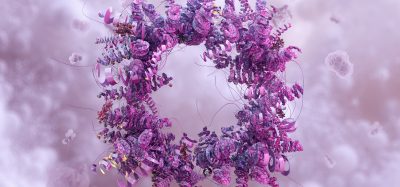Nanoparticles used to kill endometriosis lesions in animal models
Posted: 7 April 2020 | Victoria Rees (Drug Target Review) | No comments yet
Using dye-loaded nanoparticles which can heat up with near-infrared light, researchers have been able to image and treat endometriosis in animal models.


American scientists report that they have developed a precise, nanoparticle-based treatment to alleviate the pain and fertility problems associated with endometriosis.
Research led by Oleh Taratula of the Oregon State University College of Pharmacy and Ov Slayden of the Oregon National Primate Research Center at Oregon Health & Science University used photo-responsive nanoparticles to find and remove the lesions associated with the disorder.
The researchers used tiny – less than 100 nanometers in size – polymeric materials packed with a dye that can generate both a fluorescence signal and cell-killing heat under near-infrared light.
…the nanoparticles can efficiently accumulate in endometrial tissue 24 hours after being injected”
“We built our strong team to combine expertise in both nanomedicine and endometriosis,” said Olena Taratula, also a researcher with the College of Pharmacy. “This is a devastating disease and we developed and evaluated the photo-responsive nanoagent to detect and eliminate unwanted endometrial tissue with photothermal ablation.”
“The challenge has been to find the right type of nanoparticles,” Oleh Taratula said. “Ones that can predominantly accumulate in endometriotic lesions without toxic effect on the body, while preserving their imaging and heating properties.”
Using a clinically relevant animal model of endometriosis, the scientists showed that the nanoparticles can efficiently accumulate in endometrial tissue 24 hours after being injected. As they are dye-loaded, they can fluoresce to show where the lesions are. Then the nanoparticles can kill the lesions with heat by rising to 46°C upon exposure to near-infrared light.
“The heat is produced under near-infrared laser light that is harmless to tissue without the presence of the nanoparticles,” Oleh Taratula said. “The generated heat eradicates the endometrial lesions completely within a day or two.”
According to the researchers, to advance the technology to human clinical trials, future studies are needed to validate the treatment approach in animals that develop endometriosis similar to how it presents in humans.
“We believe that our developed strategy can eventually shift the current paradigm for endometriosis detection and treatment,” Oleh Taratula said. “In general, nanomedicine has barely been explored for imaging and treatment of endometriosis. Our results validate that some fundamental principles of cancer nanomedicine can potentially be used for the development of novel nanoparticle-based strategies for treatment and imaging of endometriosis.”
The findings were published in the journal Small.
Related topics
Drug Targets, Imaging, Nanomedicine, Nanoparticles, Nanotechnology, Therapeutics
Related conditions
endometriosis
Related organisations
Oregon Health & Science University, Oregon State University College of Pharmacy
Related people
Oleh Taratula, Olena Taratula, Ov Slayden








